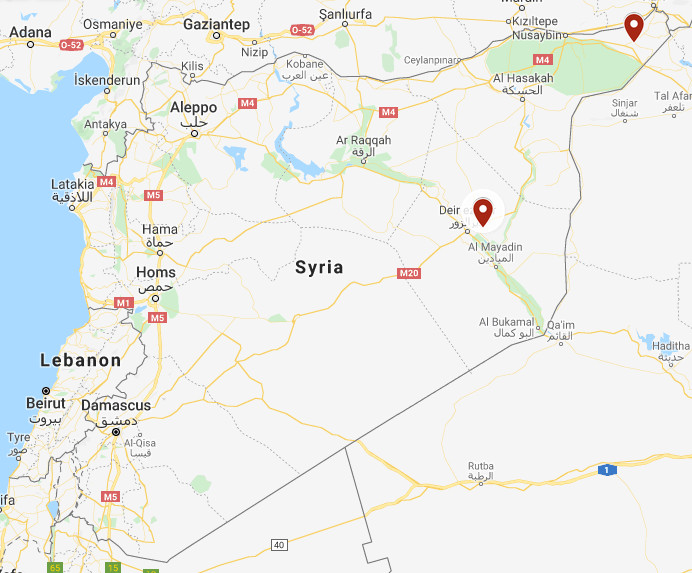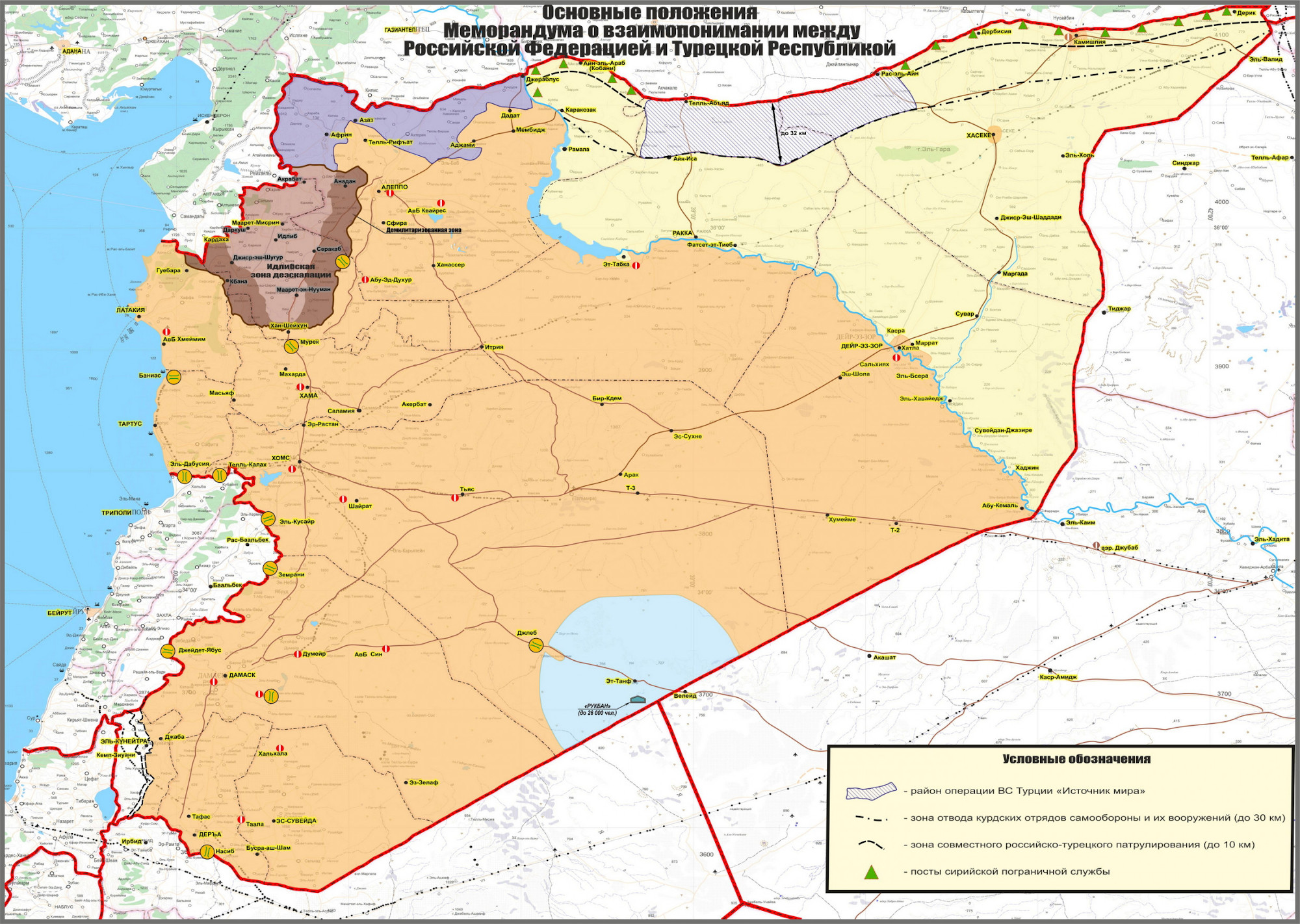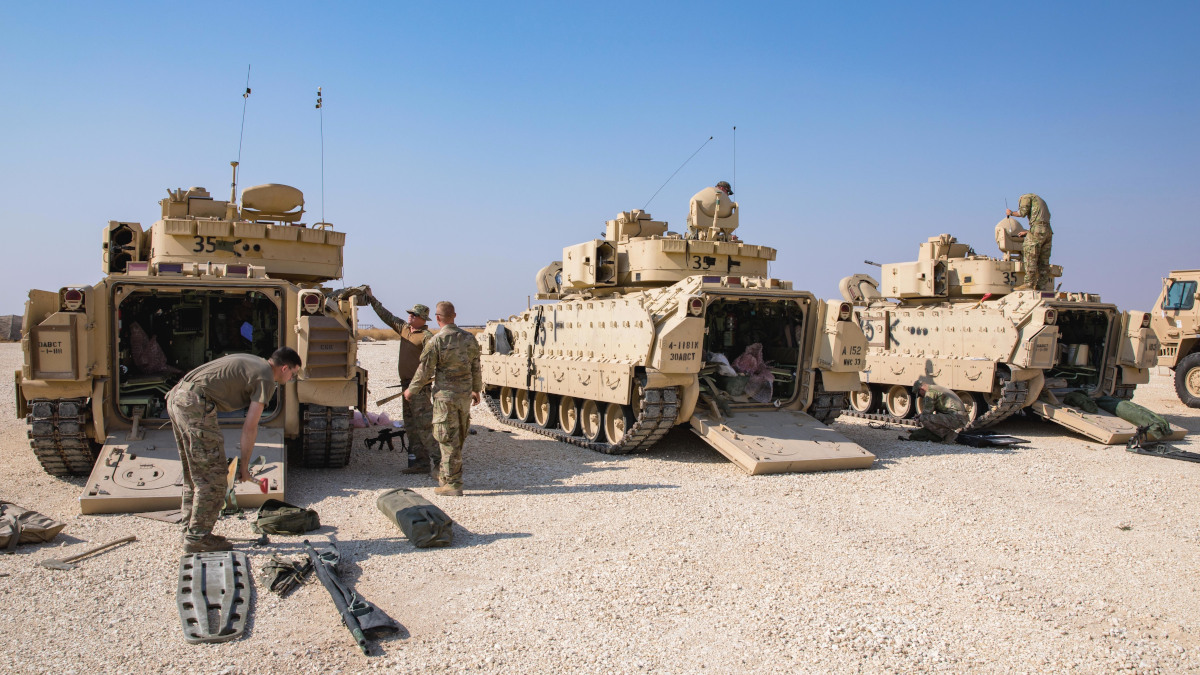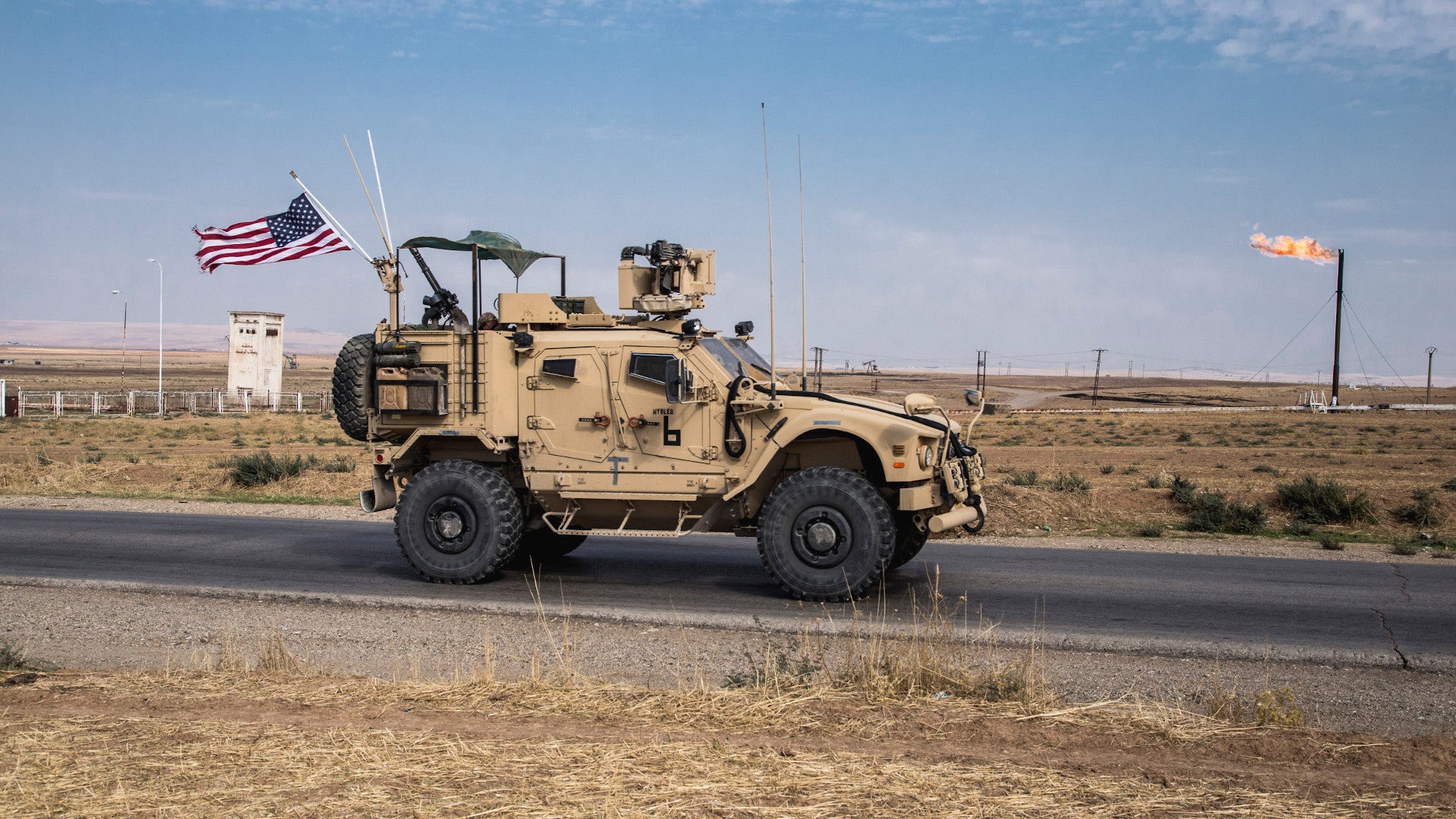U.S. forces are now patrolling oil and gas-related sites in at least two distinct regions of Syria, including one that is situated close to where Russian personnel aligned with the Syrian regime of Bashar Al Assad are also operating as part of a deal between Russia and Turkey. American troops in that particular area are also working together with members of the U.S.-backed, predominantly Kurdish Syrian Democratic Forces within a so-called “safe zone” along the Turkish border, despite a separate agreement between Washington and Ankara that those local forces would withdraw from such locations entirely. This all comes as U.S. forces elsewhere in northern Syria have again found themselves at risk of attack from Turkish-backed forces, though thankfully the artillery fire did not cause any American casualties.
On Nov. 4, 2019, an unnamed U.S. special operator confirmed to local journalists that, at least for the time being, the United States expects to continue having a presence in and around the Rmelan oilfield in far northeastern Syria. Some of the first reports that American personnel riding in M-ATV mine-resistant vehicles had returned to this area appeared on Oct. 31, 2019, but it was unclear what their mission and final destination might have been at the time. That same day, U.S. Army Bradley Fighting Vehicles and additional American troops had made headlines when they arrived in Deir Ez Zor in eastern Syria to guard strategic oil and gas fields in that part of the country. U.S. forces have withdrawn from a number of major operating locations in northern Syria since Turkey launched a major intervention in the country, targeting the Syrian Democratic Forces (SDF), on Oct. 9, 2019.

“We’re just finding out all this information right now and we’re going to continue our presence up here,” the unidentified U.S. special operator told Rudaw, a news network based in Iraq’s semi-autonomous Kurdish region, on Nov. 4. “We’re working with the SDF and they’re letting us know the situation up here as they see it.”
What’s immediately curious about this deployment is that it would appear to be in violation of a deal that the United States and Turkey had agreed to on Oct. 17, 2019. That plan called for the withdrawal of all elements of the Kurdish People’s Protection Units, also known as the YPG, which have formed the core of the SDF, from areas within 18 miles of the Turkish border. The city of Rmelan is just over 10 miles from the Turkish border and the surrounding oil fields are also within this “safe zone.”
There is no specific clause in that agreement that demands the United States cease its activities in this area, but there is also no caveat allowing for the SDF to remain if they are working together with U.S. troops. The American special operator who spoke to Rudaw made it clear these local forces remain in the area and continue to work closely with U.S. forces, despite the Oct. 17 deal.
In addition, U.S. forces patrolling in and around Rmelan are doing so very close to where Russian troops are now operating as part of a separate arrangement that Turkish President Recep Tayyip Erdogan and Russian President Vladimir Putin agreed to on Oct. 22, 2019. That deal specifically laid out plans for Russia to patrol an area approximately 6 miles deep along much of the Syrian side of the border.

The U.S. force’s exact mission in Rmelan is not entirely clear, either, though it seems inline with recently publicly stated goals from President Donald Trump and the Pentagon to secure various oil and gas resources in order to prevent ISIS or other terrorist groups, as well as the Assad regime, from being able to exploit them. “We did leave soldiers [in Syria] because we’re keeping the oil. I like oil. We’re keeping the oil,” Trump told reporters on Nov. 1, 2019.

Experts and observers have raised serious questions about whether or not such an objective would be legal under U.S. or international laws. There have also been reports that the Pentagon specifically framed its desire to remain in Syria to hold ground against ISIS and Assad around natural resources to help sway the opinion of Trump, who has repeatedly expressed a desire to withdraw from the country entirely. There are indications that U.S. military officials are still trying to align their actual objectives with the President’s statements and that personnel on the ground in Syria have not received clear orders themselves about how to proceed.
The obvious concern is that U.S. forces continuing to operate in Rmelan and other areas inside or near the designated “safe zone” face increased risks of deliberate and inadvertent altercations with a diverse array of potential opponents. Underscoring the complexity and fluidity of the situation, the Russian Ministry of Defense was actually first to reveal that elements of the Turkish-backed Free Syrian Army (TFSA) launched an artillery attack on U.S. forces driving along the M4 highway near the town of Tel Tamir on Nov. 3, 2019.
This is an area that is also within the agreed-upon buffer area that lies some 90 miles to the west of Rmelan. The public affairs office for the U.S.-led coalition fighting ISIS in Iraq and Syria subsequently confirmed the attack occurred to Military Times on Nov. 4, but stressed that the incoming rounds landed approximately just over a mile from American troops and caused no casualties. There have been an uptick in such incidents recently, but there have been periodic skirmishes between the TFSA and U.S. personnel and their SDF partners for years now.
The Russian announcement of this latest incident is also a reflection of the fact that that country’s troops have already begun to conduct patrols along the Syrian side of the border in accordance with the deal between Moscow and Ankara. This means they are now routinely operating just miles from where American troops and their SDF partners are present in Rmelan, as well. There has been a steady flow of pictures and videos showing U.S. and Russian forces passing by each other in northern Syria. Russia has also now occupied a number of forward operating locations that American personnel have abandoned in recent weeks.

It is unclear what, if any, immediate mechanisms are in place to deconflict any of these activities. “All Coalition military operations are de-conflicted with other forces operating in the region,” the U.S.-led coalition told Military Times in a statement in regards to the Tel Tamir incident. “Coalition forces maintain their inherent right to self-defense to ensure the success of our operations while prioritizing the safety of our troops.”
Still, it is not clear just how readily able troops on the ground can put these mechanisms into action to avert potentially serious misunderstandings in the field. U.S. Central Command does continue to operate a high-level deconfliction hotline with its Russian counterparts in Syria, which it recently used to help clear the way for special operations forces taking part in the raid that led to the death of ISIS leader Abu Bakr al-Baghdadi on Oct 26, 2019. The U.S.-led coalition was also able to contact Turkish officials last month to call off an artillery attack that threatened American positions near the Turkish border last month, but this came after the Pentagon had insisted that Turkey was aware of the exact locations of all U.S. personnel in the country.

Of course, beyond the potential for altercations between U.S. forces and Turkish and Turkish-backed forces, as well as Russian personnel and their Syria allies, there is also the persistent threat of terrorist attacks. ISIS, despite the recent loss of Baghdadi and his second in command, Abu al-Hassan al-Muhajir, looks to be poised to make gains as U.S. and SDF attention has shifted to responding to Turkey’s intervention. Other terrorist groups, such as Al Qaeda’s franchise in the country, could also exploit the chaotic situation, which has produced a new humanitarian crisis, as well.
All told, while patrolling oil and gas-related sites seems to be an increasingly significant mission for the American forces that remain in Syria, the situation in the country remains extremely complicated and often confusing, overall. It is very possible that the character of U.S. operations could evolve yet again in the near future.
Contact the author: joe@thedrive.com
